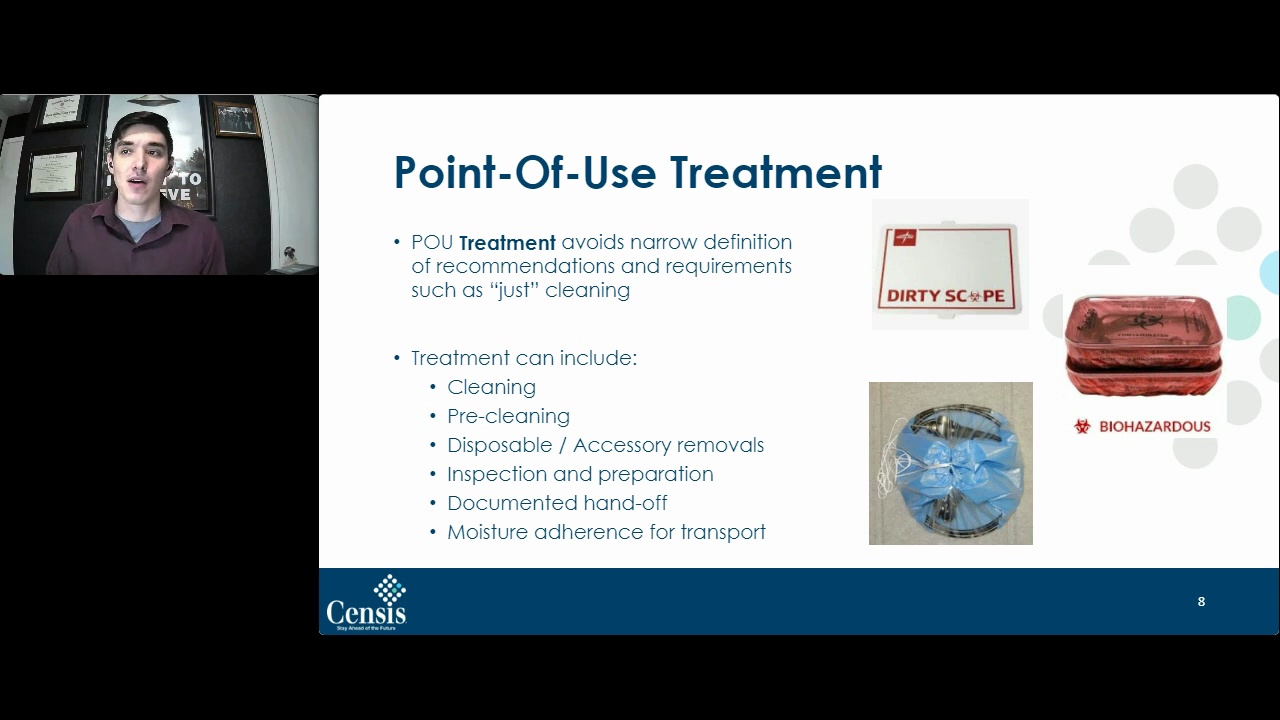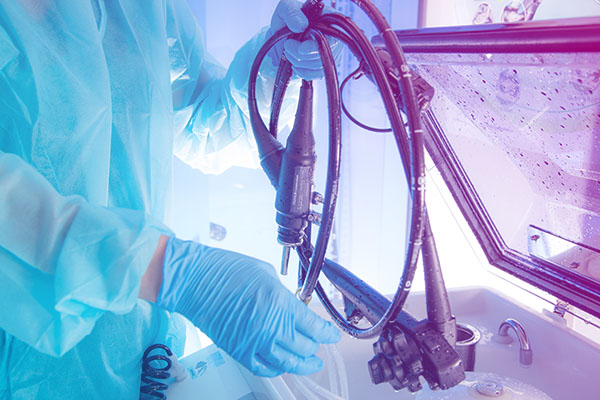AUTOMATED ENDOSCOPE REPROCESSING SOFTWARE
ScopeTrac Advanced manages every endoscope and high-level disinfection asset through the entire procedural cycle – from bedside to storage. As an industry leader in endoscope tracking systems, ScopeTrac Advanced helps you easily stay compliant with regulatory adherence, including the new AAMI ST91 standards set forth by the Association for the Advancement of Medical Instrumentation.

ACCURATE
Improves the accuracy of endoscope reprocessing records and the user experience through features like automated timers, safety stops, sequence warnings, recall alerts, and built-in instructions for use (IFUs).

SCALABLE
Configure sterilizers and disinfector machines based on basins and scopes being processed. Capture data from leak tests and residue checks and document pre-treatment events prior to high-level disinfection.

COMPATIBLE
ScopeTrac Advanced is technology agnostic and works with many compatible devices and EMR platforms to support your current endoscope reprocessing software and procedures – not replace them.
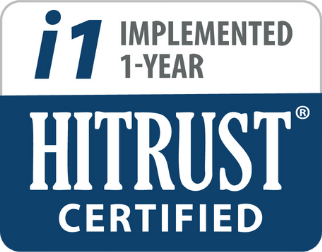
SECURE SYSTEM ARCHITECTURE
Censis has achieved HITRUST certification for ScopeTrac Advanced demonstrating a commitment to elite cybersecurity posture, ensuring customer data is safeguarded with industry-leading standards.
HANDS-FREE ENDOSCOPE REPROCESSING WORKFLOW
Mitigate cross-contamination and improve workflow efficiency by documenting scope reprocessing without touching the screen.
- Login using RFID identification wristbands
- Scan scopes using RFID tags or barcodes to begin reprocessing
- Acknowledge steps and select buttons on the reprocessing screen using the 3-pedal foot switch
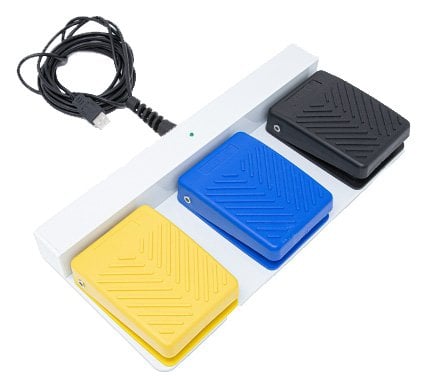
STAY AAMI ST91 INDUSTRY COMPLIANT
Censis keeps up with ever-changing regulatory adherence standards so you don’t have to.
Our endoscope tracking system is up to date with AAMI ST91 industry compliance standards and will alert sterile processing teams when endoscopes require maintenance, are expiring, or have expired.
FULL VISIBILITY: ENDOSCOPE REPROCESSING
Get comprehensive, real-time management reports that can be run on demand and provide visibility at both summary and detailed levels. Endoscope reprocessor report customization options include the ability to:
- Specify any combination and sequence of data fields
- Run reports for every asset scanned in the same transaction for efficient record retention and access
- Filter data based on user-selected values
- Hide data fields not required in the customer report
- Set up exception reporting that can alert users via email of issues requiring attention
- Interface directly with automated endoscope reprocessors and CensiTrac’s OR Scheduler
ScopeTrac Advanced Manages
the Entire Endoscope Reprocessing Loop
Procedure
Clean Storage
Procedure
Link a specific scope to a specific patient case by scanning the endoscope’s barcode. This information is stored as part of the scope’s history.
Clean Storage
As endoscopes and their accessories are scanned into storage, assets currently available can be accessed from any workstation by authorized users.
Point of Use Treatment
Reprocessing & Sterilization

Procedure

Point of Use Treatment

Clean Storage

Reprocessing & Sterilization
Procedure
Link a specific scope to a specific patient case by scanning the endoscope’s barcode. This information is stored as part of the scope’s history.
Point of Use Treatment
Scale and capture point-of-use treatment strategies for a complete, reliable and comprehensively documented cleaning and disinfection process.
Clean Storage
As endoscopes and their accessories are scanned into storage, assets currently available can be accessed from any workstation by authorized users.
Reprocessing & Sterilization
Ensure proper endoscope reprocessing with immediate displays of customer-generated and/or manufacturer IFUs, pictures, videos, and step-by-step procedures for each endoscope type.
PROCEDURE
Link a specific scope to a specific patient case by scanning the endoscope’s barcode. This information is stored as part of the scope’s history.
CLEAN STORAGE
As endoscopes and their accessories are scanned into storage, assets currently available can be accessed from any workstation by authorized users.
POINT OF USE TREATMENT
Scale and capture point-of-use treatment strategies for a complete, reliable and comprehensively documented cleaning and disinfection process.
REPROCESSING & STERILIZATION
Ensure proper endoscope reprocessing with immediate displays of customer-generated and/or manufacturer IFUs, pictures, videos, and step-by-step procedures for each endoscope type.
ONGOING SUPPORT
Receive ongoing support from your dedicated client manager as you continue to scale your endoscope tracking software, system and procedures.
Your client manager and support team are always available to help with:
- Data integration
- Onsite training
- Clinical services
- 24/7 customer support
- Annual business reviews
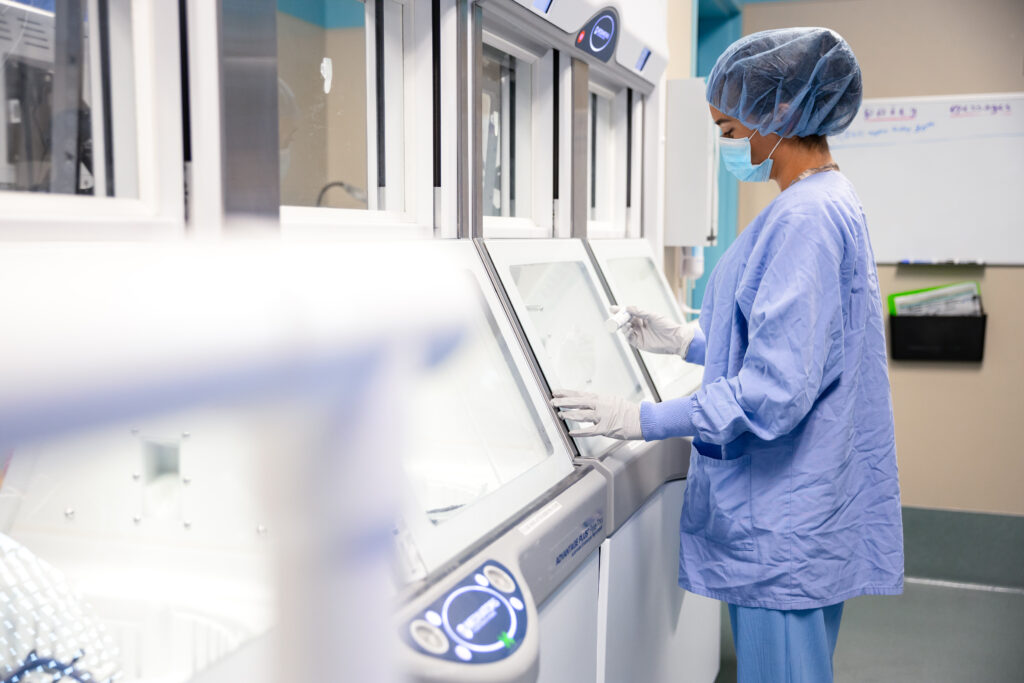
FREQUENTLY ASKED QUESTIONS
What are the steps in reprocessing flexible endoscopes?
The steps for reprocessing flexible endoscopes are numerous and complex. But essentially, all endoscopes have to complete the following steps:
- Precleaning
- Leak test
- Manual external cleaning
- Brushing internal channels.
- Flushing and/or suctioning internal channels.
- Clean water rinse of external surfaces.
- Clean water rinse or flush all internal channels.
- Drying flexible endoscope.
- Cleaning verification should be performed. If endoscope passes, continue to high-level disinfection (HLD) or sterilization. If endoscope fails, it must be reprocessed again.
- HLD or sterilization, depending on facility practice.
How long can I wait to clean the flexible endoscope after pre-cleaning?
This is typically addressed in the endoscope manufacturer’s Instructions for Use, or IFU. AAMI ST91-2021 states to follow the IFU for the endoscope model for delayed reprocessing, but if no time limit is given, manual cleaning should begin within one hour or as determined by the facility based on their own risk assessment.
What is the purpose of a flexible endoscope?
The purpose of a flexible endoscope is to investigate the inside of a human orifice without needing to surgically create a hole. An example of this is a colonoscopy, where a flexible endoscope is used to search for abnormalities in a patient’s colon. Colonoscopes are hooked up to a visual monitor so that the doctor can see what the distal end of the endoscope sees.
ADDITIONAL RESOURCES
